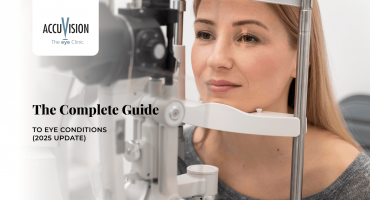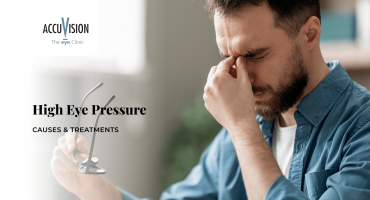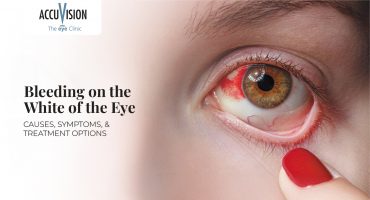- Understanding the Tear Film and Hydration
- Daily Water Intake for Eye Health
- Nourishing the Eyes with Hydrating Foods
- Best Hydration Practices for Eye Comfort
- When to Seek Professional Help
- Supporting Your Eyes with Holistic Care
Best Hydration Practices for Eye Comfort: A Complete Guide to Supporting Your Eye Health
It is common to experience sensations of dryness or fatigue in the eyes after extended periods of work, particularly in environments with sustained screen exposure or climate-controlled settings like offices with air conditioning or central heating. These symptoms are often early indicators of inadequate eye hydration. Optimal eye function depends on a continuous and adequate supply of quality tears, which maintain the moisture and protective barrier essential for ocular comfort and health. Even mild systemic dehydration can disrupt this delicate equilibrium, manifesting as the familiar sensations of dryness, irritation, or grittiness.
Scientific research emphasizes the importance of hydration in maintaining ocular surface health. A systematic review highlights that systemic hydration status significantly influences various ocular physiological processes. Dehydration is associated with the development of dry eye syndrome and other eye disorders, thereby emphasizing the critical role of maintaining adequate fluid balance for eye comfort and function.
Recognizing the influence of hydration on eye health allows for the adoption of targeted practices aimed at sustaining hydration levels, thereby improving daily eye comfort. Prioritizing hydration is among the most straightforward yet effective strategies to support the tear film and overall eye wellbeing. The following sections will explore the underlying science and practical approaches to help preserve optimal eye hydration in daily life.
Understanding the Tear Film and Hydration
The surface of the eye is protected and nourished by a delicate tear film composed of three essential layers:
- Aqueous layer: Primarily water-based, this layer supplies oxygen and nutrients while washing away debris.
- Lipid (oil) layer: This outermost layer prevents tear evaporation and maintains tear film stability.
- Mucin layer: It ensures the even spread of tears across the eye’s surface for complete coverage
Dehydration reduces the volume and quality of the aqueous layer, compromising the tear film’s integrity. This may lead to symptoms such as dryness, irritation, grittiness, and eye fatigue. While hydration alone may not resolve chronic dry eye conditions, it establishes a foundational level of comfort and tear film health.
Daily Water Intake for Eye Health
The NHS Eatwell Guide recommends consuming approximately 6-8 glasses of fluid daily to support overall bodily functions, including tear production. A consistent intake spread throughout the day is more effective than sporadic large amounts, enabling your body to maintain hydration steadily.
Practical hydration tips include:
- Keeping a reusable water bottle within sight as a reminder to drink regularly.
- Setting phone alarms or reminders for hydration breaks during busy days.
- Balancing caffeinated and alcoholic beverages with water intake.
- Increase fluids during exercise, hot weather, or in heated environments.
Hydration requirements vary with lifestyle, climate, and individual physiology. Monitoring your body’s thirst signals and adjusting fluid intake accordingly can help sustain eye comfort.
Nourishing the Eyes with Hydrating Foods
A well-rounded diet rich in hydrating foods supports eye health alongside fluid intake:
- Water-rich fruits and vegetables: Cucumber (over 95% water), watermelon, and oranges provide hydration and essential antioxidants like vitamin C.
- Healthy fats: Omega-3 fatty acids found in salmon, flaxseeds, and walnuts support the lipid layer of the tear film, promoting tear stability and quality.
- Nutrient-rich vegetables: Leafy greens such as spinach offer lutein and zeaxanthin; carrots are a source of beta-carotene; bell peppers contribute vitamin C and hydration
Incorporating these foods can improve overall eye health while further supporting hydration.
Best Hydration Practices for Eye Comfort
Beyond fluid intake and diet, environmental and behavioral factors significantly influence eye comfort:
- Environmental adjustments: Use humidifiers in dry, centrally heated, or air-conditioned areas. Avoid direct airflow from fans or vents to prevent tear evaporation. Limit exposure to smoke, which irritates the eyes.
- Screen habits: Implement the 20-20-20 rule; every 20 minutes, look at something 20 feet away for 20 seconds to reduce eye strain. Blink consciously and frequently during screen use. Adjust screen brightness and viewing distance for optimal comfort.
- Contact lens care: Follow professional hygiene protocols, adhere to recommended replacement schedules, and consider daily disposables if dryness persists. Always wash your hands before handling lenses and avoid using tap water for lens cleaning.
Adopting these habits in combination with steady hydration supports sustained eye comfort throughout daily activities.
When to Seek Professional Help
While maintaining proper hydration is fundamental to supporting eye comfort, persistent or worsening dry eye symptoms require timely professional evaluation. If you experience dryness, grittiness, burning sensations, or a foreign body feeling in your eyes lasting more than a few weeks despite adequate hydration, these symptoms may signal underlying conditions.
Certain warning signs necessitate prompt consultation with an eye care specialist. These include:
- Vision Changes: Symptoms such as blurred or fluctuating vision, difficulty focusing on screens, or decreased visual clarity may indicate ocular surface damage or other serious eye health issues beyond simple dryness. Such visual disturbances warrant immediate assessment.
- Contact Lens Intolerance: A sudden inability to tolerate contact lenses could reflect alterations in tear composition or corneal health and may predispose to complications like abrasions or infections if not addressed early.
A comprehensive dry eye evaluation goes beyond a routine eye exam and often includes advanced tests such as tear osmolarity measurement and minibiography imaging to detect gland blockages and assess tear film quality. Additionally, identifying underlying systemic health issues that may contribute to dry eye symptoms is essential for effective, personalized treatment. Early professional intervention can prevent long-term eye damage, preserve vision, and enable tailored therapies that extend beyond hydration alone.
Please note that the information in this article is provided for educational purposes only and is not a substitute for professional medical advice, diagnosis, or treatment. If you are experiencing persistent symptoms, you should seek a professional assessment from a qualified eye care specialist.
Supporting Your Eyes with Holistic Care
Maintaining optimal eye comfort through improved hydration does not require major lifestyle changes. Small, consistent habits such as regular fluid intake, incorporating water-rich foods into your diet, and being mindful of your environment form the foundation for sustaining long-term eye health. These practices, combined with proper screen breaks and adequate sleep, help support your eye’s natural ability to stay moist and comfortable throughout demanding days.
If dry eye symptoms persist despite these strategies, seeking professional evaluation is important. At AccuVision, our specialist team provides thorough dry eye assessments and tailored treatment plans using advanced diagnostic technologies. This personalized approach ensures effective management to restore and maintain optimal eye comfort and health.
Frequently Asked Questions
How much water is beneficial for eye health?
Aim for 6-8 glasses daily as a baseline, adjusting for personal factors such as activity and environment with a focus on maintaining consistent intake.
Which foods support eye hydration?
Water-rich fruits and vegetables alongside omega-3-rich sources and nutrient-dense greens help maintain tear film quality and hydration.
Is hydration alone enough to prevent dry eyes?
Hydration supports comfort and tear production, but chronic dry eye usually necessitates a multifaceted approach, including environment management and professional care.
When should I see an optometrist for dry eyes?
Seek care if symptoms persist, worsen, or if vision changes or contact lens intolerance develop despite self-care.
How effective are dry eye treatments?
Treatments vary, but many patients achieve significant relief with appropriate therapies tailored to their condition.
References:
Sherwin, J.C., Kokavec, J. & Thornton, S.N. (2015) ‘Hydration, fluid regulation and the eye: in health and disease’, Clinical & Experimental Ophthalmology, 43(8), pp. 749-764. doi:10.1111/ceo.12546
NHS (2022) The Eatwell Guide. Live Well. NHS. Available at: https://www.nhs.uk/live-well/eat-well/food-guidelines-and-food-labels/the-eatwell-guide/ (Accessed: 17 September 2025).
WebMD (n.d.) Why cucumbers are good for you. Available at: https://www.webmd.com/diet/ss/slideshow-why-cucumbers-are-good-for-you (Accessed: 17 September 2025).
Note: For more information on how AccuVision handles medical information and online content, please see our Privacy Notice and Terms of Use, which outline the limits of online medical advice.








